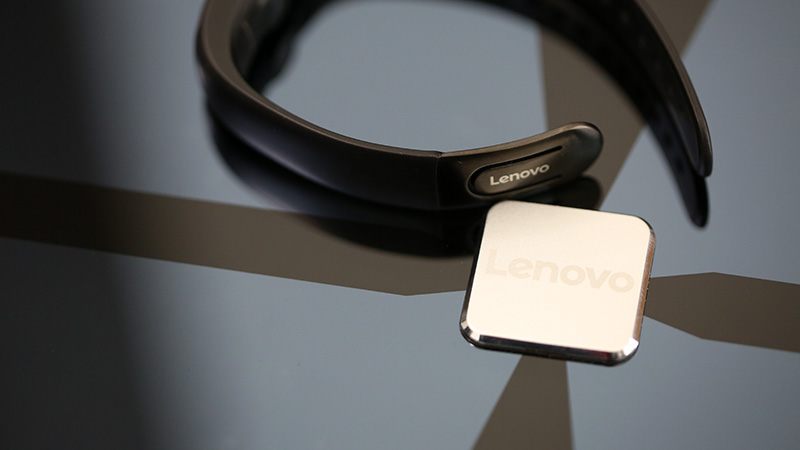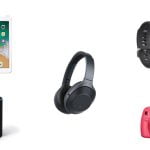
Fitness wearables allow us to quantify our health, right from the number of steps taken to the number of calories burned through the day. While some people actually look forward to meeting their goals, there are a few who don’t know what to make of the data thrown at them. Lenovo is trying to make a mark with its HW02 Plus fitness band by introducing PAI (Personal Activity Intelligence), which takes in all the numbers and tells you the amount of activity you need to perform to stay healthy. In addition, Lenovo has also launched a connected weighing scale that uses Bluetooth to send data to your smartphone. It not only measures weight but also other parameters including BMI (Body Mass Index), body fat percentage, and muscle mass.
The market is already crowded with fitness trackers. Among the many that we have reviewed, we have found the Xiaomi Mi Band 2 and the Ambrane Flexi Fit to be well designed and accurate. With its new fitness band and the Bluetooth weighing scale in the market, does Lenovo have the right ammo to take on these established players? We put both new devices to the test.

Lenovo HW02 Plus design
The Lenovo HW02 Plus is a single piece and does not have a removable capsule like the Xiaomi Mi Band 2. Lenovo has used good quality rubber for the band, and it has a double-pin clasp to stay fastened securely. Most fitness bands have a rubber loop at the end which helps the user put the band on, and also prevents it from falling off if the clasp comes loose. The HW02 Plus does not have any such loop, although the clasp never came undone during our review.
This fitness band’s display is quite stealthy, and is only visible when it is on. To light it up and cycle through different screens, the band has a touch sensitive button below the display. We found that the raise-to-wake gesture worked well, but the display isn’t very visible outdoors. Flip the band over and you can see the that it has a heart rate sensor at the centre, and contact points for charging. You get a proprietary charger in the box.
Lenovo HW02 Plus features and performance
The screen displays basic information such as the date, time, number of steps taken, calories burned, and heart rate. For more metrics, you will need to download the Lenovo Healthy app from the Androidor iOS app store. We found that the app wasn’t well optimised for Android 8.0 Oreo and had a battery drain issue. The issue didn’t crop up when we paired the device with the Smartron t.phone P (Review) running Android Nougat. The app lets you set a vibrating alarm on the band and enable reminders to motivate you if you have been sedentary for too long. It also has the option to enable notifications for popular apps such as Facebook, WhatsApp, and WeChat, among others.
The band could display the name of the sender for messages we received on WhatsApp, but it wasn’t easy to read on the tiny display. For incoming calls, the band would display the number scrolling across the tiny screen instead of the contact name for numbers saved in our contact list, which wasn’t very helpful.

We found that the Lenovo HW02 Plus band is quite accurate for distance tracking. At the end of a 1km treadmill run, we had the Lenovo band showing 1.07km, which is acceptable. The heart rate sensor is also fairly accurate and had consistent readings. We compared it with an Apple Watch Series 2 and found that the readings were in the same range. The band also supports automatic sleep tracking and we were satisfied with its performance in this area.
Lenovo’s PAI approach is fairly unique. Instead of using just the number of steps you take to measure how fit you are, it uses the profile information you enter, your heart rate throughout the day, and your activity level to generate PAI scores. Lenovo says that you need to maintain your score at above 100 PAI points over a rolling 7-day period to claim that you are healthy. Since the score is unique to every individual, 100 PAI points for an unhealthy person and an athlete won’t mean the same thing. We also found that a 7-day average was too long, as you could work out rigorously for two days while slacking off for the rest of the week and still maintain a good score. It would have been nice if the band and the app motivated us to hit our goals, but we felt that it didn’t do that adequately.
We found that the band’s battery life was weak. Since PAI mode constantly pulls data from the band, it is very heavy on power. In this mode, we found that the band could only last for two and a half days; enabling notifications caused that to dip even more. You can switch the band to normal mode which delivers close to 5 days of battery life, but this still seems low considering that the Mi Band 2 can easily manage over two weeks on a charge.

Lenovo HS10 Fitness Scale design
Lenovo has also launched its fitness scale called the Lenovo HS10 Smart Scale. It uses Bluetooth and can be paired with the same Lenovo Healthy app. The body of the scale is made of tempered glass and it is powered by four AAA batteries, which Lenovo says should last for 6 months. It has sensors at the base to measure weight, and electrodes on the top to help calculate body fat, BMI, body water, muscle mass, bone mass, and visceral fat. While the weight is displayed on the scale just like any other, you will need the app to check other parameters. You can create profiles within the app to allow multiple people to use the scale and see their own information.
Lenovo HS10 Fitness Scale features and performance
To check the accuracy of the scale we got a complete professional body analysis done at a fitness centre. We found that the scale could measure weight accurately and had negligible variations for the BMI and body water weight figures. Body fat mass was measured lower on the scale compared to the body analysis result, and the Basal Metabolic Rate (BMR) was off by 200kcal as well. So while the scale is a convenient way of measuring different parameters, it isn’t necessarily going to be 100 percent accurate all the time. Still, the differences aren’t huge and you can use these parameters to help you manage your diet and workout plans.
Lenovo Healthy App

The Lenovo Healthy App links data collected by the band and the scale. It shows a lot of information, but it isn’t presented in the best way possible. Using the app isn’t very easy and you could struggle to find the setting you are looking for. After using the band for close to two weeks we felt that rather than just showing information, Lenovo could have used the data in more interesting ways, such as motivating us to increase our PAI score, or helping us set targets. This could also have been a good incentive to buy both devices as part of a fitness ecosystem.
Verdict
Lenovo has entered the wearables industry with a fitness band priced at Rs. 1,999, while the scale is priced at Rs. 3,799. Lenovo’s PAI method to gauge health is new and lets you focus on just one number to stay healthy. However, as it uses a proprietary algorithm, it’s hard to know how accurate PAI is. Also, battery life is quite low in PAI mode, forcing you to charge the band every two days. Normal mode will work for longer but this does not help the device stand out from its competition. The Xiaomi Mi Band 2is currently in stock and feels like a better deal, with its 20-day battery life.
Lenovo’s connected scale is accurate enough for casual use, and will give you information about multiple health parameters apart from your weight. Since there is support for multiple profiles, everyone in the family can use one scale with their own smartphones, making it a good investment.
Lenovo HW02 Plus Band
Price: Rs. 1,999
Pros
- Accurate measurements
- Affordable
Cons
- No loop for the band
- Unoptimised app
- Low battery life in PAI mode
Ratings (out of 5)
- Design 3.5
- Tracking 4
- Other features 4
- Overall 4
Lenovo HS10 Smart Scale
Price: Rs. 3,799
Pros
- Fairly accurate measurements
- Easy to use
- Connects to multiple smartphones
Cons
- Unoptimised app
Ratings (out of 5)
- Design 4
- Tracking 4
- Other features 3.5
- Overall 4
[“Source-gadgets.ndtv”]







